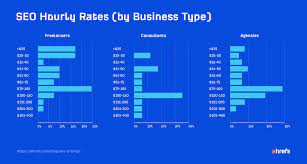In today’s digital age, having a strong online presence is crucial for any business looking to thrive and succeed. One of the most effective ways to achieve this is through Search Engine Optimization (SEO). Business SEO plays a pivotal role in improving your website’s visibility on search engines, driving organic traffic, and ultimately increasing your customer base.
So, what exactly is business SEO? It refers to the practice of optimizing your website and its content to make it more attractive and relevant to search engines like Google. By strategically incorporating targeted keywords, improving website structure and navigation, enhancing user experience, and acquiring quality backlinks, you can improve your website’s ranking in search engine results pages (SERPs).
The benefits of investing in business SEO are numerous. Firstly, it helps you reach a wider audience. When potential customers search for products or services related to your industry, appearing on the first page of search results significantly increases your chances of being noticed. Studies have shown that the majority of users rarely go beyond the first page when conducting a search.
Secondly, business SEO helps build credibility and trust. When your website ranks high in organic search results, users perceive it as more reliable and trustworthy. This can lead to increased brand awareness and customer loyalty.
Moreover, business SEO provides long-term results. Unlike paid advertising campaigns that require ongoing investment to maintain visibility, an effective SEO strategy can generate sustainable organic traffic over time. By consistently optimizing your website’s content and keeping up with algorithm updates, you can maintain a strong online presence without relying solely on paid ads.
Furthermore, business SEO offers valuable insights into consumer behavior. Through tools like Google Analytics, you can gather data on user demographics, preferences, and browsing habits. This information allows you to better understand your target audience and tailor your marketing efforts accordingly.
Implementing an effective business SEO strategy requires expertise and ongoing effort. It’s essential to stay updated with the latest industry trends and algorithm changes to ensure your website remains optimized. While some businesses choose to handle SEO in-house, partnering with an experienced SEO agency can provide you with the necessary knowledge and resources to achieve optimal results.
In conclusion, business SEO is a vital component of any successful online marketing strategy. By investing in optimizing your website for search engines, you can improve your online visibility, attract more potential customers, and ultimately grow your business. Remember, the digital landscape is constantly evolving, so staying on top of SEO best practices is crucial for maintaining a competitive edge in today’s market.
8 Essential Tips for Boosting Business SEO
- Identify and target relevant keywords.
- Create original, high-quality content that is regularly updated.
- Optimize page titles, meta descriptions, and headings for SEO purposes.
- Utilize social media to promote your business and increase visibility online.
- Use Google Analytics to track website traffic and identify areas of improvement in your SEO strategy.
- Integrate internal linking within your website to improve user experience and search engine rankings for specific pages or topics related to your business’ services or products
- Submit a sitemap to search engines so they can easily crawl through your content
- Monitor competitors’ SEO strategies to stay ahead of the game
Identify and target relevant keywords.
When it comes to optimizing your business website for search engines, one of the most important tips is to identify and target relevant keywords. Keywords are the words or phrases that users type into search engines when looking for information, products, or services related to your business.
By identifying and targeting the right keywords, you can improve your website’s visibility in search engine results and attract more organic traffic. Here’s how you can effectively utilize this tip on business SEO:
- Research: Start by conducting keyword research to identify the terms that are relevant to your industry and have a high search volume. There are various tools available, such as Google Keyword Planner and SEMrush, that can help you discover popular keywords related to your business.
- Relevance: Choose keywords that align with your products or services. It’s important to select keywords that accurately represent what your business offers so that you attract the right audience. For example, if you run a bakery in New York City, targeting keywords like “best bakery in NYC” or “freshly baked goods in New York” would be more relevant than generic terms like “bakery” or “bread.”
- Long-tail Keywords: Consider using long-tail keywords – longer and more specific phrases – as they tend to have less competition and higher conversion rates. These keywords often reflect users who are further along in their buying journey and are more likely to convert into customers. For instance, instead of targeting the broad term “shoes,” focus on long-tail keywords like “women’s running shoes for flat feet.”
- On-page Optimization: Once you’ve identified your target keywords, strategically incorporate them into your website’s content. Optimize page titles, headings, meta descriptions, URL structures, image alt tags, and body text with relevant keywords while ensuring a natural flow of content.
- Content Creation: Develop high-quality content around your targeted keywords. Create informative blog posts, articles, or guides that provide value to your audience. By consistently producing valuable content, you can establish yourself as an authority in your industry and attract more organic traffic.
- Monitor and Refine: Regularly monitor your website’s performance using analytics tools. Keep an eye on keyword rankings, organic traffic, and user behavior to identify areas for improvement. Refine your keyword strategy based on data insights and adjust your content accordingly.
Remember, the goal is to strike a balance between targeting keywords for search engines and providing valuable content for users. By identifying and targeting relevant keywords, you can enhance your business SEO efforts, increase organic traffic, and ultimately drive more conversions for your business.
Create original, high-quality content that is regularly updated.
When it comes to business SEO, one of the most effective tips is to create original, high-quality content that is regularly updated. Content is the backbone of your website and plays a crucial role in attracting both search engines and users.
Search engines like Google prioritize websites that provide valuable and relevant information to their users. By creating original content, you establish yourself as an authority in your industry and increase your chances of ranking higher in search engine results pages (SERPs).
High-quality content not only helps with SEO but also engages your audience. When visitors find your content informative, engaging, and valuable, they are more likely to spend time on your website, explore other pages, and potentially convert into customers. This can lead to increased brand loyalty and customer retention.
Regularly updating your content is equally important. Search engines favor websites that consistently provide fresh and up-to-date information. By regularly publishing new articles, blog posts, or other forms of content, you signal to search engines that your website is active and relevant.
To create original, high-quality content for business SEO:
- Research: Identify topics that are relevant to your industry and align with what your target audience is searching for. Use keyword research tools to find popular keywords related to these topics.
- Unique Perspective: Offer a unique perspective or angle on the topic you’re writing about. This will help differentiate your content from others in the same field.
- Engaging Writing Style: Write in a way that captivates readers’ attention and keeps them engaged throughout the article. Use headings, subheadings, bullet points, and images to break up the text and make it easier to read.
- Provide Value: Ensure that each piece of content provides value to the reader by answering their questions or solving their problems. This will establish trust with your audience and encourage them to come back for more.
- Optimize for SEO: Incorporate relevant keywords naturally throughout your content. Use descriptive and compelling meta titles and descriptions to entice users to click on your website in search results.
Remember, creating original, high-quality content is an ongoing process. Regularly update your existing content to keep it relevant and add new articles or blog posts to expand your website’s reach. By consistently providing valuable information, you can boost your business SEO efforts and attract more organic traffic to your website.
Optimize page titles, meta descriptions, and headings for SEO purposes.
When it comes to optimizing your website for search engines, one crucial tip is to pay attention to page titles, meta descriptions, and headings. These elements play a significant role in improving your website’s visibility and attracting organic traffic.
Page titles are the clickable headlines that appear on search engine results pages. They should accurately describe the content of each webpage while incorporating relevant keywords. By carefully crafting compelling and keyword-rich page titles, you can increase the chances of your website ranking higher in search results.
Meta descriptions are brief summaries that appear below the page title on search engine results pages. While they don’t directly impact rankings, they serve as a preview of what users can expect from your webpage. A well-written meta description should be concise, engaging, and encourage users to click through to your website.
Headings (H1, H2, H3, etc.) are used to structure the content on your webpage. Search engines use these headings to understand the hierarchy and relevance of different sections within a page. By optimizing headings with relevant keywords and making them clear and descriptive, you can improve both user experience and SEO.
Optimizing these elements is essential for several reasons. Firstly, they provide valuable information to users about what they can expect when visiting your website. Clear and relevant page titles and meta descriptions help attract qualified traffic by accurately reflecting the content on each webpage.
Secondly, optimizing page titles, meta descriptions, and headings helps search engines understand the context of your webpages better. When these elements align with user queries or search intent, it increases the likelihood of search engines ranking your website higher in relevant search results.
Additionally, well-optimized page titles and meta descriptions can significantly improve click-through rates (CTRs). When users see compelling and informative snippets in search results that match their needs or interests, they are more likely to click on your link instead of others’.
To optimize these elements effectively for SEO purposes:
- Conduct keyword research: Identify relevant keywords and phrases that align with your content and target audience.
- Incorporate keywords strategically: Place keywords naturally within page titles, meta descriptions, and headings, ensuring they accurately reflect the content.
- Write compelling copy: Craft enticing page titles and meta descriptions that encourage users to click through to your website.
- Use appropriate heading tags: Structure your content using heading tags (H1 for main headings, H2 for subheadings, etc.) to improve readability and SEO.
Remember, optimization is an ongoing process. Regularly review and update page titles, meta descriptions, and headings as needed to stay relevant and maintain a strong online presence. By implementing this tip effectively, you can enhance your website’s visibility, attract more qualified traffic, and ultimately improve your overall SEO performance.
Utilize social media to promote your business and increase visibility online.
In today’s digital age, social media has become an integral part of our daily lives. It not only connects people but also provides a powerful platform for businesses to promote their products and services. When it comes to business SEO, utilizing social media can be a game-changer in increasing visibility and reaching a wider audience online.
Social media platforms such as Facebook, Instagram, Twitter, LinkedIn, and YouTube have billions of active users. By creating compelling and engaging content that resonates with your target audience, you can leverage these platforms to promote your business effectively.
Firstly, social media allows you to showcase your brand personality and establish a strong online presence. By sharing relevant industry news, informative blog posts, eye-catching visuals, and engaging videos, you can captivate your audience’s attention and build credibility for your business.
Secondly, social media provides an opportunity for direct interaction with your customers. Responding to comments and messages promptly shows that you value their feedback and are committed to providing excellent customer service. This engagement not only strengthens customer relationships but also helps in building a loyal community around your brand.
Moreover, social media platforms offer various advertising options that can boost your visibility even further. Paid advertisements on platforms like Facebook Ads or Instagram Ads allow you to target specific demographics based on location, interests, behavior, and more. This targeted approach ensures that your ads are shown to the right people who are more likely to be interested in what you have to offer.
Additionally, social media activity can contribute positively to your website’s SEO efforts. When users engage with your content by liking, sharing, or commenting on it, search engines take notice. These interactions signal search engines that your content is valuable and relevant, which can improve your website’s ranking in organic search results.
To make the most out of social media for business SEO purposes:
- Identify the platforms where your target audience is most active.
- Create a consistent brand presence across all chosen platforms.
- Develop a content strategy that aligns with your brand and audience’s interests.
- Optimize your social media profiles with relevant keywords and links to your website.
- Engage with your audience regularly by responding to comments, messages, and mentions.
- Utilize social media advertising to reach a wider audience and promote specific offerings.
In conclusion, social media is a powerful tool for promoting your business and increasing visibility online. By utilizing these platforms strategically, you can enhance your business SEO efforts, drive organic traffic to your website, and ultimately grow your customer base. So, leverage the power of social media and unlock the potential it holds for your business’s success in the digital realm.
Use Google Analytics to track website traffic and identify areas of improvement in your SEO strategy.
In the ever-evolving world of business SEO, staying on top of your website’s performance is essential. One powerful tool that can help you track and analyze your website traffic is Google Analytics. By leveraging this free and user-friendly platform, you can gain valuable insights into how users interact with your site and identify areas for improvement in your SEO strategy.
Google Analytics provides a wealth of data that allows you to understand where your website traffic is coming from, which pages are most popular, how long visitors stay on your site, and much more. Armed with this information, you can make informed decisions about optimizing your website to attract more organic traffic.
One of the key benefits of using Google Analytics for business SEO is the ability to track keyword performance. By analyzing the keywords that drive traffic to your site, you can determine which ones are most effective in generating organic visits. This insight enables you to refine your keyword strategy by focusing on high-performing keywords and identifying opportunities for new ones.
Another valuable feature of Google Analytics is its ability to measure user engagement metrics. You can assess the bounce rate (the percentage of users who leave after viewing only one page), average session duration, and pages per session. These metrics provide a snapshot of how engaging and relevant your content is to visitors. If you notice high bounce rates or short session durations, it may indicate that certain pages or content need improvement or optimization.
Google Analytics also provides data on user demographics such as location, age, gender, and interests. This information helps you better understand your target audience and tailor your SEO strategy accordingly. For example, if you discover that a significant portion of your audience comes from a specific geographic location or has particular interests, you can optimize your content to cater specifically to their needs.
Furthermore, Google Analytics offers valuable insights into the effectiveness of external marketing efforts such as social media campaigns or email marketing. By setting up campaign tracking parameters within Google Analytics, you can measure the success of these initiatives and adjust your strategy accordingly.
In conclusion, leveraging Google Analytics for business SEO is a smart move. By tracking website traffic and analyzing user behavior, you can identify areas of improvement in your SEO strategy. Whether it’s optimizing keywords, enhancing user engagement, or refining your target audience, the data provided by Google Analytics empowers you to make data-driven decisions that will ultimately boost your website’s visibility and drive organic traffic. So, take advantage of this powerful tool and unlock the full potential of your SEO efforts.
Integrate internal linking within your website to improve user experience and search engine rankings for specific pages or topics related to your business’ services or products
Integrating internal linking within your website is a powerful tip to enhance both user experience and search engine rankings. By strategically linking relevant pages or topics within your website, you can guide users to valuable information while signaling to search engines the importance and relevance of specific pages.
Internal linking refers to the practice of hyperlinking text or images on one page of your website to another page within the same domain. When done correctly, it can provide several benefits for your business SEO efforts.
Firstly, internal linking improves user experience by making it easier for visitors to navigate through your website. By including contextual links within your content, you can direct users to related or additional information that they may find helpful. This not only keeps them engaged but also encourages them to spend more time exploring your website, ultimately increasing the likelihood of conversions.
Secondly, internal linking helps search engines understand the structure and hierarchy of your website. When search engine crawlers discover links between different pages on your site, they can follow these pathways and index the content more effectively. This enables search engines to better understand the relationships between various pages and their relevance in relation to specific keywords or topics.
Moreover, internal linking allows you to distribute link equity across different pages of your website. Link equity refers to the value or authority passed from one page to another through hyperlinks. By strategically placing internal links from high-authority pages (e.g., homepage or popular blog posts) to other relevant pages that may need a boost in rankings, you can help those pages gain more visibility in search results.
Additionally, incorporating internal links can improve keyword optimization for specific pages or topics. By using anchor text (the clickable text of a hyperlink) that includes relevant keywords related to a particular page’s content, you send signals to search engines about its relevance and improve its chances of ranking higher in search results for those keywords.
To effectively integrate internal linking into your business SEO strategy, consider conducting an audit of your website’s content and identifying opportunities for linking relevant pages together. Look for natural insertion points within your content where a link would enhance the user’s understanding or provide additional value.
Remember to use descriptive and keyword-rich anchor text when creating internal links. Instead of using generic phrases like “click here,” opt for anchor text that accurately describes the linked page’s content or topic.
In conclusion, integrating internal linking within your website is a simple yet impactful tip for improving user experience and search engine rankings. By guiding users to valuable information and signaling the importance of specific pages, you can enhance both user engagement and search engine visibility. So, take advantage of this powerful SEO technique and start incorporating relevant internal links throughout your website today.
Submit a sitemap to search engines so they can easily crawl through your content
When it comes to optimizing your website for search engines, submitting a sitemap is a simple yet effective tip that can greatly improve your business SEO. A sitemap is essentially a blueprint of your website’s structure, listing all the pages and content it contains. By submitting this sitemap to search engines like Google, you make it easier for them to crawl and index your website.
Why is this important? Well, search engines use crawlers or bots to navigate through websites and understand their content. By providing them with a clear and organized sitemap, you ensure that these bots can easily discover all the valuable information on your site.
Submitting a sitemap offers several benefits for your business SEO efforts. Firstly, it helps search engines understand the structure and hierarchy of your website. This means they can prioritize crawling important pages or sections, ensuring that they are indexed and appear in search results.
Secondly, a sitemap allows search engines to discover new or updated content on your site more efficiently. Instead of relying solely on links from other websites or internal navigation, submitting a sitemap ensures that the bots can directly access and index all relevant pages.
Additionally, by submitting a sitemap, you can provide additional information about each page on your site. This includes details like when the page was last modified or how frequently it’s updated. Such information helps search engines determine how often they should revisit your site for fresh content.
Submitting a sitemap is relatively straightforward. Most popular Content Management Systems (CMS) offer plugins or built-in features that generate XML sitemaps automatically. Once you have generated the sitemap file, you can submit it through Google Search Console or other webmaster tools provided by different search engines.
In conclusion, submitting a sitemap to search engines is an essential step in optimizing your website for better business SEO. It ensures that search engine bots can easily crawl through your content, understand its structure, and index it appropriately. By taking this simple action, you can improve your website’s visibility and increase the chances of attracting organic traffic from search engine results.
Monitor competitors’ SEO strategies to stay ahead of the game
In the competitive world of business SEO, staying ahead of the game is crucial for success. One effective tip to achieve this is to monitor your competitors’ SEO strategies. By keeping a close eye on what they are doing, you can gain valuable insights and make informed decisions to outperform them in search engine rankings.
Monitoring your competitors’ SEO strategies allows you to identify their strengths and weaknesses. By analyzing their website structure, content optimization techniques, keyword targeting, and backlink profiles, you can gain a better understanding of what is working for them and what can be improved upon. This knowledge helps you refine your own SEO strategy and stay one step ahead.
Additionally, monitoring your competitors’ SEO efforts enables you to identify new opportunities. You may discover untapped keywords or content gaps that your competitors have overlooked. By capitalizing on these opportunities, you can attract more organic traffic and potentially outrank them in search results.
Furthermore, tracking your competitors’ SEO strategies helps you stay updated with industry trends and algorithm changes. Search engines constantly evolve their algorithms to deliver the most relevant and valuable results to users. By observing how your competitors adapt to these changes, you can adjust your own strategy accordingly and ensure that you remain competitive in the ever-changing SEO landscape.
There are various tools available that can assist in monitoring your competitors’ SEO activities. These tools provide insights into keyword rankings, backlink profiles, content performance, and more. By leveraging these resources effectively, you can gain a comprehensive overview of your competition’s SEO tactics.
However, it’s important to note that while monitoring your competitors is beneficial, it should not be the sole focus of your SEO strategy. It’s equally important to focus on creating high-quality content, optimizing user experience on your website, building strong backlinks from reputable sources, and implementing other proven SEO techniques.
In conclusion, monitoring your competitors’ SEO strategies is an essential tip for staying ahead in the business world. By analyzing their tactics, identifying opportunities, and adapting to industry changes, you can refine your own SEO strategy and outperform your competition. Remember, effective SEO is a combination of monitoring competitors, staying up-to-date with industry trends, and consistently optimizing your website for search engines.




